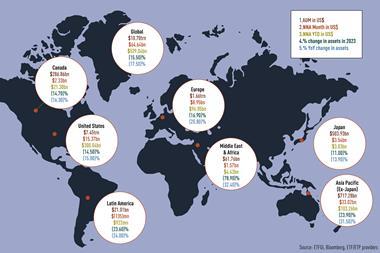Simplicity is one of the main advantages of exchange-traded funds. They are baskets of quoted securities, usually representing an index, which are as easy to trade as a single share. But the evolution of these financial instruments has been a long and complicated one.
ETFs, or trackers, as they are known in continental Europe, first came about in North America. The idea sprang out of portfolio trading, or program trading, says Gary Gastineau of US firm ETF Advisors in his book ‘The ETF manual’. Program trading, in the late 1970s and early 1980s was the then new ability to trade an entire portfolio in a single order. This was often a portfolio consisting of all the S&P500 stocks, for example.
This led to demand for a portfolio or basket product that could be easily traded, so that smaller institutions and individual investors could have the advantages that program trading gave. To meet that demand, instruments called Index Participation Shares or IPS were created. They were a simple but synthetic proxy for the S&P500, though they were available on other indices too.
But a federal court found IPS to be illegal futures contracts; they had to be traded on a futures exchange is they were traded at all. Stock exchanges had to close down their IPS trading. After this came TIPs – Toronto Stock Exchange Index Participations. This was a warehouse receipt-based instrument tracking the TSE-35 index. TIPs were successful, but they turned out to be expensive for the Toronto Stock Exchange.
In the US, at the same time, Supershares and SPDRs – two other portfolio share products – were being developed. These were structured using both a trust and a mutual fund structure. Supershares turned out to be too expensive and complex for many customers, but SPDRs were a success.
Now, the S&P500 SPDRs (Standard & Poor’s Depositary Receipts) account for nearly a quarter of all ETF assets under management in the US. In 1996, WEBS or World Equity Benchmark Shares were developed by Morgan Stanley and managed by Barclays Global Investors. These were later renamed them iShares MSCI Series. After this DIAMONDS were introduced, another significant ETF, based on the Dow Jones Industrial Average and run by State Street Bank.
After the initial launches of SPDRs and WEBS on the market, ETFs were introduced which were based on indices beyond the S&P. Some of these took on a high profile, including the Dow Jones 30 and the ‘QQQ’ – the ticker for the Nasdaq 100. The QQQ was heavily geared towards technology, which in the late 1990s, was the sector of the time.
ETFs came to Europe later, though demand and use of the products still has not caught up with that seen in the US. Although there was a need for ETFs in Europe, asset managers in Europe could not market the US-style ETFs because of the way they were structured. They did not comply with the UCITs requirements. This drove them to develop ETFs specifically for the European market.
Since early 2001, the use of ETFs has grown enormously. Back then, assets under management stood at $675m (e518m), and has risen to $30.8bn by the end of last October.












No comments yet